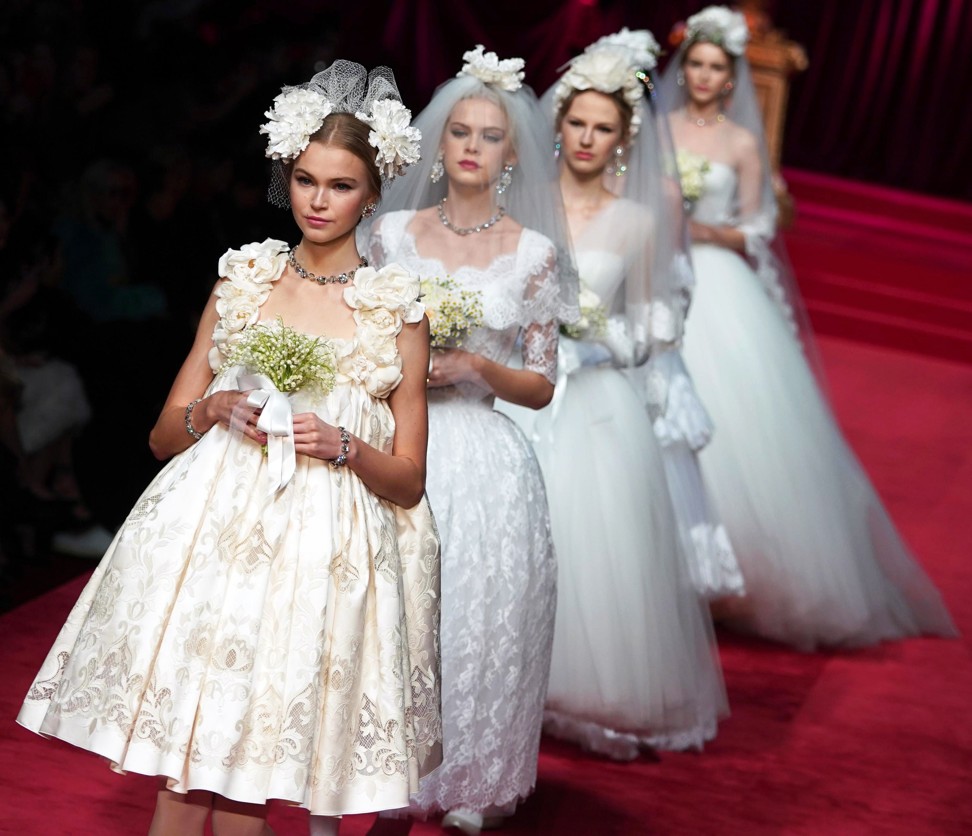Dolce & Gabbana sees slowdown in sales in China after racist ad controversy
- Dolce & Gabbana’s overall revenues in the year ended March 2019 grew 4.9 per cent to US$1.54 billion
- But the Asia-Pacific market shrank to 22 per cent from 25 per cent of total turnover

Italian fashion house Dolce & Gabbana expects sales in China to fall in the current financial year after a slowdown in 2018-19, in a sign the brand is still struggling to shake off the fallout from a controversial advertising campaign in the country.
Chinese customers account for more than a third of spending on luxury products worldwide, and are increasingly shopping for these in their home market rather than on overseas trips.
Dolce & Gabbana’s overall revenues in the year ended March 2019 grew 4.9 per cent to 1.38 billion euros (US$1.54 billion), more than half of which came from sales in shops and outlets, the group said in a filing to Italy’s Chamber of Commerce seen by Reuters.
But the Asia-Pacific market shrank to 22 per cent from 25 per cent of total turnover and the group expects sales in Greater China to decline in the current financial year, ending in March 2020, the filing said.
Dolce & Gabbana, which does not publicly disclose its results, was not immediately available for a comment.
Last November the group was forced to cancel a marquee show in Shanghai amid a spiralling backlash against an advertising campaign that was decried as racist by celebrities and on social media and led to Chinese e-commerce sites boycotting Dolce & Gabbana products.
Users reacted angrily to a series of adverts showing a Chinese woman struggling to eat pizza and spaghetti with chopsticks. The blunder was compounded when screenshots were circulated online that appeared to show co-founder Stefano Gabbana making negative remarks about China, even though the designer said his account had been hacked.
Gabbana and co-founder Domenico Dolce later asked for China’s “forgiveness” in a video posted on China’s Twitter-like platform Weibo, trying to salvage a crucial market for the luxury brand.
The company’s results filing does not mention the ad controversy but refers to global trade tensions and a slowdown in China’s economy as clouding the overall outlook. Recent protests in Hong Kong have also been cited by global fashion brands as a negative factor.

The slowdown in Asia contrasted with the Americas, where sales increased to 16 per cent of 2018-19 turnover from 13 per cent a year earlier. Other markets remained stable, with Italy accounting for 23 per cent of revenues, Europe 28 per cent and Japan 5 per cent.
Overall sales are expected to increase slightly in the current financial year but with costs at almost 60 per cent of revenues, profitability is suffering.
In the last financial year, Ebitda – earnings before interest, tax, depreciation and amortisation – fell by more than 40 per cent to 87.2 million euros, with a contraction in margins to 6.3 per cent from 12.2 per cent of sales.
However the group said things could improve in the second part of the 2019-2020 year.

“The good start of the autumn/winter retail season could be the sign of a better than expected second half of the year,” it said.
The latest industry 2019 outlook, released by consultancy company Bain in June – at the onset of the Hong Kong protests – forecast a 4 per cent to 6 per cent increase in global sales of luxury goods at constant currencies thanks largely to booming Chinese demand. Mainland China is expected to rise 18-20 per cent.